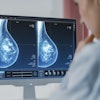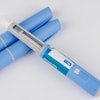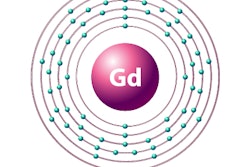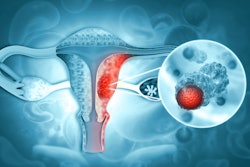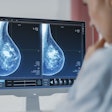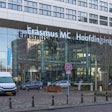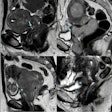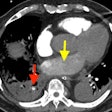
Greater collaboration between the imaging community and industry is needed in the fight to achieve sustainability. The roundtable session on the "Green Radiology Department" at ECR Overture on 6 March formed a call to arms which was heard "loud and clear" by panelist Kees Wesdorp, PhD, chief business leader for Precision Diagnosis at Philips. He responded with how industry could help departments tackle the issues of energy consumption associated with high-level equipment.
Wesdorp noted that sustainability went hand in hand with its existing mission of expanding access to care for patients.
"Industry has a fundamental role to play. It's urgent and the time to act is now. There is ample opportunity, but it requires a partnership between industry and health systems," he told participants.
There were three main thrusts to industry's efforts, he noted.
- Reducing idle time and leveraging heat production
- Energy baselining
- Enlarging the role of informatics
Besides minimizing downtime and looking at ways to reuse the heat produced by systems, Kees noted that Philips was already transitioning to a circular productive program such that by 2025 it would recover all equipment in the field and give it a second life either through refurbishment or through harvesting parts.
The company is also working on energy baselining to help health systems understand the key sources of carbon dioxide emissions.
"Energy baselining and carbon dioxide emissions and footprint baselining is critical. That's where insights and tools come into play, and we're developing those as an industry partner," he said. "In terms of informatics, going towards the cloud to reduce onsite servers would be another push towards a much greener environment. Informatics is going to play a much larger role as we move forwards to decarbonize the footprint out there in the field and leverage the economies of scale and scope of cloud technologies and informatics."
 The panel discusses the challenges of green radiology.
The panel discusses the challenges of green radiology.But would moving from local servers to cloud-based data harvesting and control, really reduce energy consumption? This was a question from moderator Dr. Adrian Brady, ESR first vice-president and consultant radiologist at Mercy University Hospital in Cork, Ireland, to Kees and informatics expert Dr. Luis Martí-Bonmatí, director of medical imaging at La Fe University and Polytechnic Hospital, Valencia, Spain.
They both concurred that although cloud technology uses large data centers, it could be more efficient in terms of consumption when servers were grouped together. Wesdorp added that it was also key to partner up in a supplier-certified manner to ensure that partner cloud technology providers took a green approach in terms of how their energy was sourced.
Water pollution
Presenting the "Greenwater project," Dr. Francesco Sardanelli, professor of radiology at the University of Milan hoped that the current project underway in Milan would prompt the design of future multicentric studies to help develop specific systems or devices that would reduce the quantity of iodine and gadolinium reaching aquatic environments.
The project aims to study over a 12-month period the quantity of retrievable iodine-based -- and gadolinium-based contrast agents from urine collected from outpatients within one hour of administration and to assess the rate of acceptance of the project by patients, according to age, sex, season, and other socioeconomic variables. The influence of these variables on iodine and gadolinium concentration in urine from around 800 patients enrolled over 12 months will also be analyzed.
"We want to estimate how much contrast agent could be prevented from entering waste water going into unmonitored sewers with a small extension of up to one hour to the observation period, and to gauge patients' 'green sensitivity,' " Sardanelli said.
Besides checking if patients are prepared to spend 30 to 60 minutes longer in the department than they normally would, to help save the environment, the other expected result from the study will be to consider how radiology departments are constructed, such as potentially building different bathrooms for patients undergoing contrast exams. He also pointed to future devices using new technologies that could help to extract gadolinium from urine.
In the panel discussion, he noted that this approach could be combined with personalized medicine.
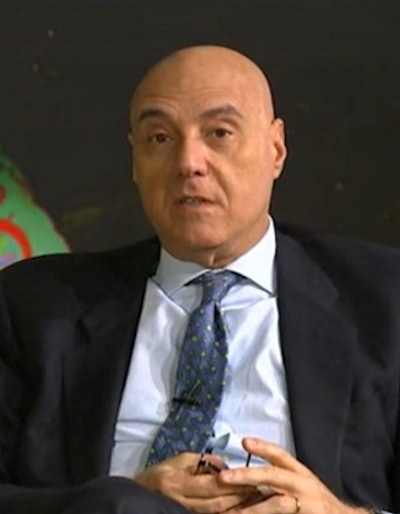 Dr. Francesco Sardanelli.
Dr. Francesco Sardanelli.Recovering the gadolinium from an old patient with an estimated low glomerular filtration rate (GFR) and a low contrast dose may not be as efficient as recovering it from a young patient with higher GFR undergoing a high dose exam, he noted, adding that there needed to be models to predict the contribution of each patient depending on age, weight, GFR, and dose. He also pointed to how AI could greatly reduce the dose of contrast required.
"One published paper suggests that with deep learning we can reduce gadolinium dose by 90% for the same quality images. It raises the question do we recover more gadolinium at the end of the process or inject less at the beginning?" he said.
Martí-Bonmatí noted the need for transparent reporting of dose adjustment due to weight or heart rate and the development of systems to reuse recovered products. Indeed, everyday gestures and common sense are at the heart of sustainability, the panel agreed, and whatever measures are taken at home should be transposed to imaging.
Post-COVID solutions
The best way to achieve a green radiology department is to do the right exam on the right patient at the right moment, noted panelist Dr. Lorenzo Derchi, chair of emergency radiology at San Martino Hospital, Genoa, Italy.
"In the western world the great problem is consumerism which erodes the resources of the planet and there is much consumerism in healthcare and imaging. We do a lot of nonindicated imaging, and we have to work hard to reduce this," he said.
Responding to Derchi, Dr. Andrea Rockall, professor of radiology at Imperial College London, who presented "Shaping the radiology department," noted the need for both innovation and for attention to daily practice in the here and now.
 Dr. Andrea Rockall.
Dr. Andrea Rockall."Decision support to get it right first time so we don't repeat imaging accidentally or inappropriately, will reduce healthcare costs and environmental impact. We can make it happen," she said.
While the pandemic has led to an acceleration of digital tools which has had a tremendously positive environmental impact, it has also compounded some of the challenges of sustainability, noted Brady pointing to how the crisis has reduced environmental credentials of hospitals and departments due to a return to single-use items and an increase in waste.
Rockall noted that at her hospital both surgeons and radiologists were looking at a return to reusable items.
"In hysterosalpingograms, dilators can be resterilized. We have shifted to plastic single-use models, but we used to very happily use a metal resterilized kit. I think there is a clear saving there," she said.
Swiss scheme
Revealing how simple actions such as changing standby-mode duration on reporting stations can have a major impact on a department’s energy consumption, Prof. Dr. Joachim Hohmann from Kantonsspital Winterthur presented the "Green Fingerprint" project, whereby the power consumption of 32 reporting stations was measured every minute over 194 days, yielding around ten million readings.
All components, such as desktop lamps and mobile chargers, were included in these readings. Results showed that there was a big discrepancy in energy consumed by some reporting stations compared to others, and different patterns of consumption depending on what mode stations were in. Even in stand-by mode the reporting stations consumed half the energy they did when they were on, he noted.
“An initial simple scenario to save money would be to change standby mode to just one hour before the station shuts down completely, to save around 24,000 kilowatt hours per year in the department, equating to an energy saving of around 45%,” he told participants, adding that if all departments in Switzerland were to follow suit, the saving would be 1.5 million kilowatt hours per year across the country.
